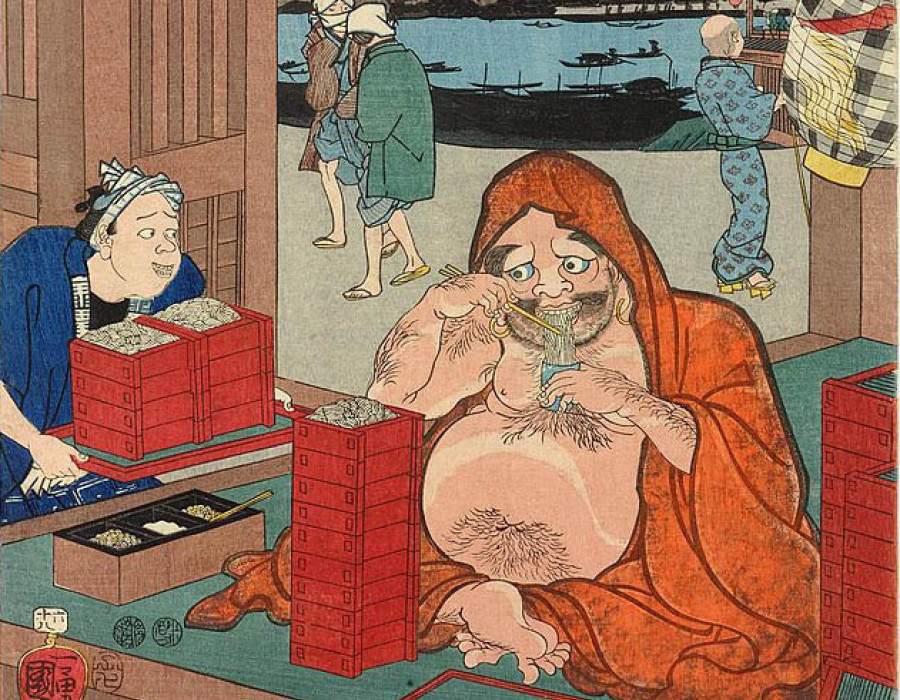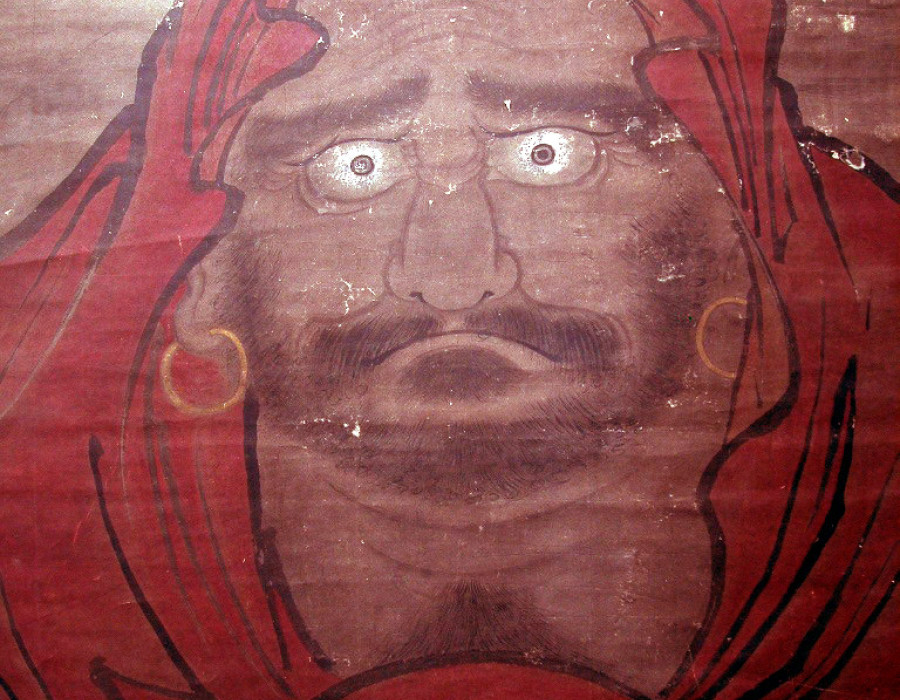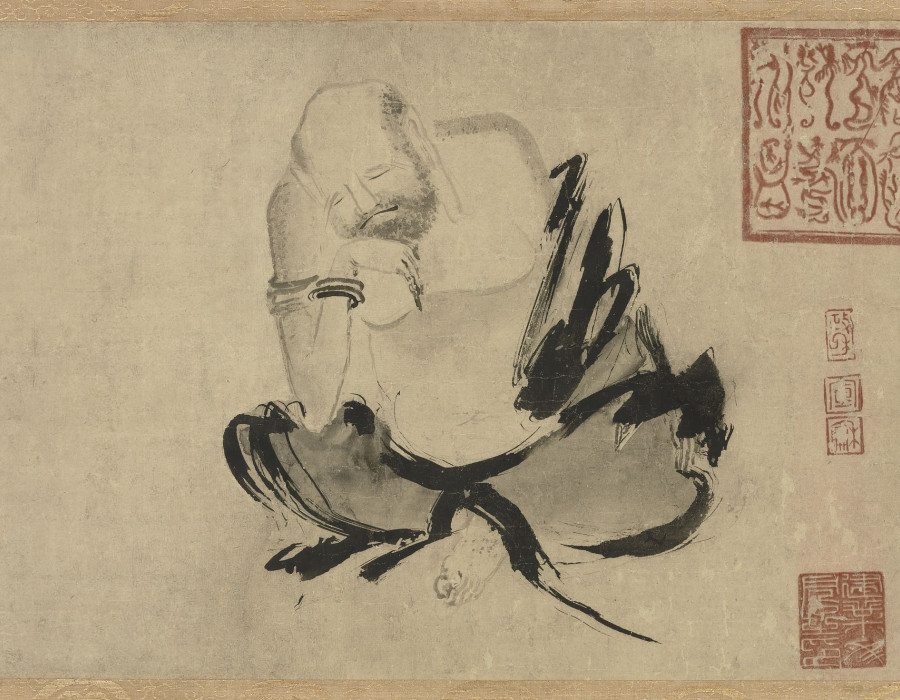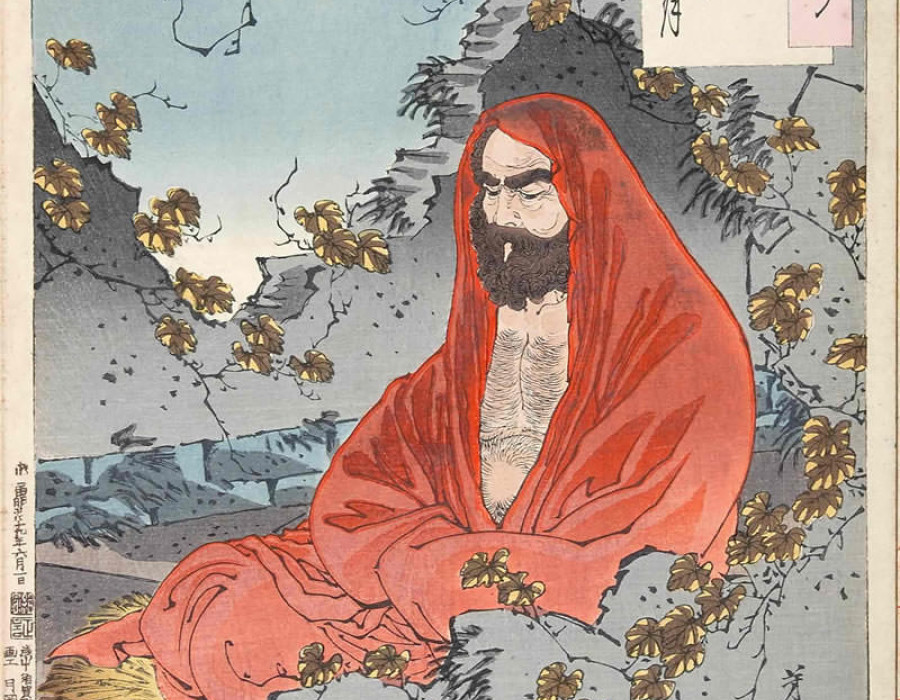Bodhidharma
The Story of Bodhidharma
Bodhidharma was the quasi-mythical figure who founded the Zen school in 5th Century China.
.jpg)
The Indian monk Bodhidharma (Jp. Daruma) eating mounded dishes of soba noodles.
https://commons.wikimedia.org/wiki/File:No.68Moriyama%E5%AE%88%E5%B1%B1(BM_2008,3037.14769).jpg
Bodhidharma is credited with being the founder of the Chan/Zen School; yet little is known about him.
There are two written sources, variously copied into later texts and some oral traditional stories about him. In fact there has been some uncertainty as to his historical existence. What we do have are the elements of a tradition.
Modern scholarship places Bodhidharma as living during the 5th century C.E. His origins are disputed.
The Record of the Buddhist Monasteries of Luoyang compiled in 547 C.E. states that Bodhidharma was originally a Persian from Central Asia who had travelled extensively and entered China aged 150.
Another text called ‘Two Entrances and Four Acts’ written by Tanlin and found in the Dunhuang cave system, places his origins in South India.
Later tales add details saying he was the third son of a South Indian king who rather like the Buddha renounced his privileged life and took up the black robe of the monk becoming the disciple of the 27th Indian patriarch Prajnatara.
Prajnatara was a victim of one of the occasional persecutions of Buddhism in India. He was imprisoned and finally executed but not before he managed to transmit the lineage, in the outer form of the Buddha’s robe and bowl, to Bodhidharma.
This robe and bowl was the outward evidence of the direct line of transmission of the teachings from the Buddha. As mentioned above, facts are few, but there are a number of important stories, sermons and sayings that are attached to the person called Bodhidharma which encapsulate the spirit of Chan/Zen Buddhism.
THE FOUR LINE VERSE
A special transmission outside the teachings,
Not dependent on words and phrases.
Directly pointing to the human heart,
Seeing into its nature and awakening.
This four line verse, attributed to Bodhidharma by tradition, captures the whole thrust of the Chan/Zen school.
By the 5th century, Mahayana Buddhism was becoming a distinct body of texts, commentaries and schools. It has spawned a complex philosophy, psychology and set of ritual practices. But in some quarters there was felt to be a danger in all this.
The Buddha had originally had his insight without all this elaboration and some felt that the direct insight was in danger of being substituted and lost within a vast edifice of intellectual thought.
The Chan/Zen school arose in reaction to what it saw as an over-elaboration of the teachings. It was not that it ever said these teachings were incorrect. In fact it is clear from the sayings of the Chinese Chan masters that they were fully conversant with them; just that these teachings could distract students from their own direct insight.
The first two lines of the four verses point this out. As some famous Zen sayings put it:
“Buddhas and patriarchs do but point the way.”
And then follow this up by saying:
“Do not mistake the pointing finger for the moon!”
So these first two lines make it clear that the teachings are transmitted heart-to-heart and that what is transmitted is outside all words, teachings and concepts.
In the early history of Zen in the West this was taken as being permission to do away with all the teachings altogether. However it is clear that this is not the case in the history of Chan/Zen in China, SE Asia and Japan, where monks are expected to be knowledgeable about the basic teachings.
The last two lines make clear the necessity for students to cultivate their own direct insight.








